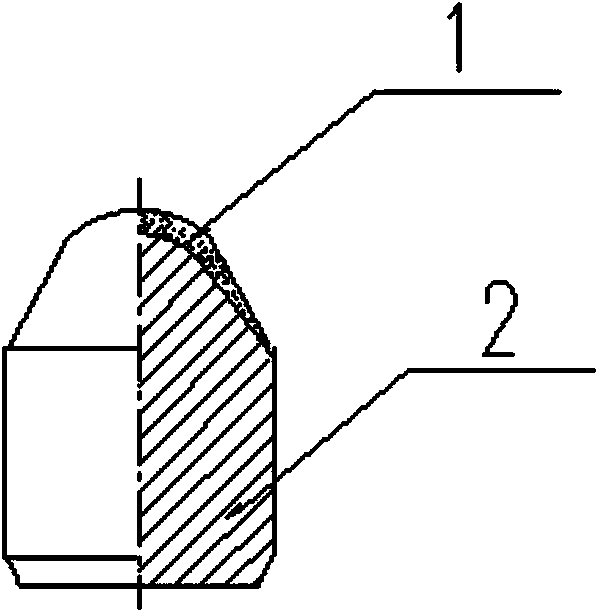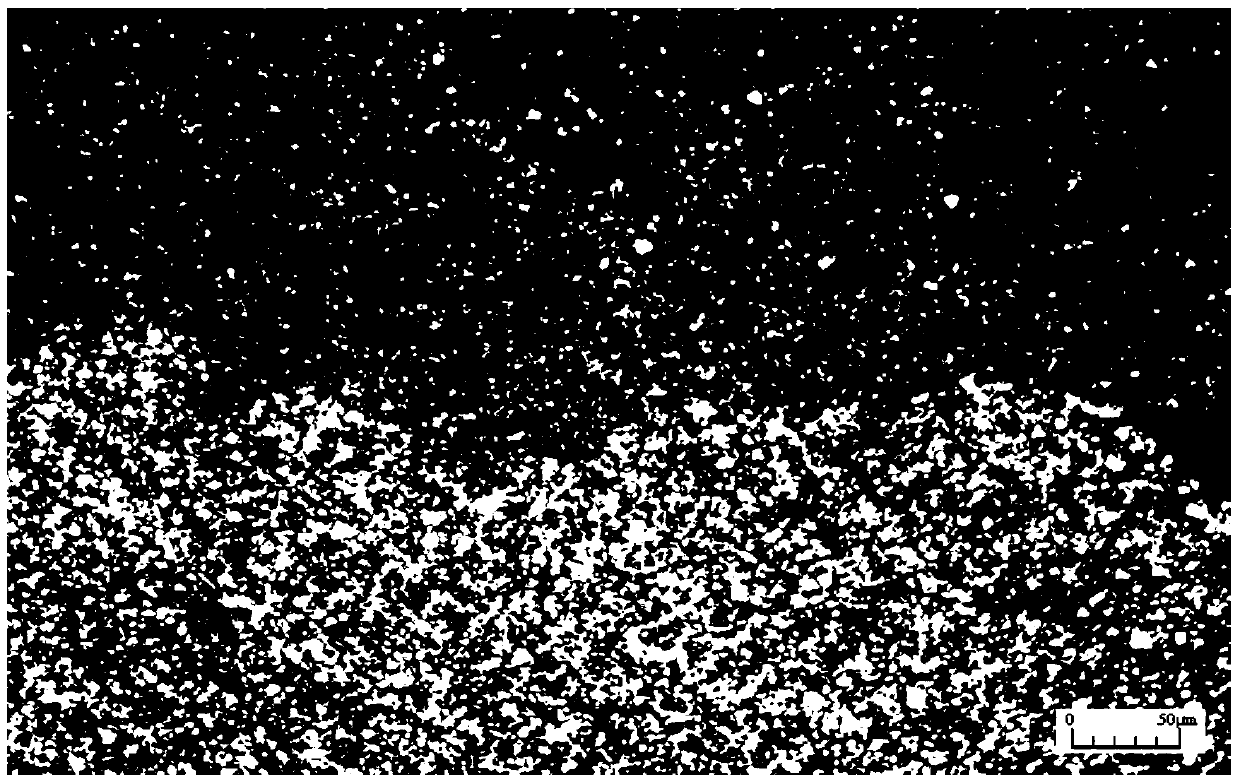Microwave sintering method for hard alloy
A microwave sintering and cemented carbide technology, which is applied in the field of fine-grained cemented carbide and low cobalt content, can solve the problems of complex process, failure to achieve a good degree of cooperation, high cost, etc., and achieve the effect of firm bonding
- Summary
- Abstract
- Description
- Claims
- Application Information
AI Technical Summary
Problems solved by technology
Method used
Image
Examples
Embodiment 1
[0027] The surface layer of hard alloy on the tip of the tooth contains 5% cobalt, and the rest is composed of tungsten carbide and a very small amount of unavoidable impurities. The particle size of tungsten carbide is 0.8μm; the matrix cemented carbide contains 10% cobalt, and the rest is tungsten carbide and a very small amount of unavoidable impurities. The particle size of tungsten carbide is 1μm, 2μm and 3μm respectively, and its weight ratio is: 1μm: 2μm: 3μm = 30%: 30%: 40%. After powder mixing, the two powders are ball milled, dealcoholized, glued, and granulated , Pressed into a tapered tooth blank with a composite layer, the thickness of the surface layer is controlled within 1-5mm, and then microwave sintered. The process is a three-stage continuous sintering process: three stages of degreasing, redox and final densification are carried out continuously. The control conditions of the degreasing stage are: nitrogen protection, pressure: 3*10 3 ~20Pa; heating rate:...
Embodiment 2
[0029] The surface layer of cemented carbide on the tooth tip contains 6% cobalt, and the rest is composed of tungsten carbide and a very small amount of unavoidable impurities. The particle size of tungsten carbide is 0.7μm; the matrix cemented carbide contains 7% cobalt, and the rest is tungsten carbide and a very small amount of unavoidable impurities. The particle sizes of tungsten carbide are 1μm, 2μm and 3μm respectively, and the weight ratio is: 1μm:2μm:3μm=30%:30%:40%. After powder mixing, the two powders are ball milled, dealcoholized, glued, and granulated , Pressed into a tapered tooth blank with a composite layer, the thickness of the surface layer is controlled within 1-5mm, degreased in a degreasing furnace, and then microwave sintered. The process is as follows: nitrogen gas protection, pressure: 3*10 3 ~20Pa; heating rate: 15°C / min, from room temperature to 550°C; heat preservation at 550°C for 10 minutes; then heat up to 1080°C at a rate of 15°C / min; heat pre...
PUM
| Property | Measurement | Unit |
|---|---|---|
| thickness | aaaaa | aaaaa |
| particle size | aaaaa | aaaaa |
| hardness | aaaaa | aaaaa |
Abstract
Description
Claims
Application Information
 Login to View More
Login to View More - R&D
- Intellectual Property
- Life Sciences
- Materials
- Tech Scout
- Unparalleled Data Quality
- Higher Quality Content
- 60% Fewer Hallucinations
Browse by: Latest US Patents, China's latest patents, Technical Efficacy Thesaurus, Application Domain, Technology Topic, Popular Technical Reports.
© 2025 PatSnap. All rights reserved.Legal|Privacy policy|Modern Slavery Act Transparency Statement|Sitemap|About US| Contact US: help@patsnap.com


